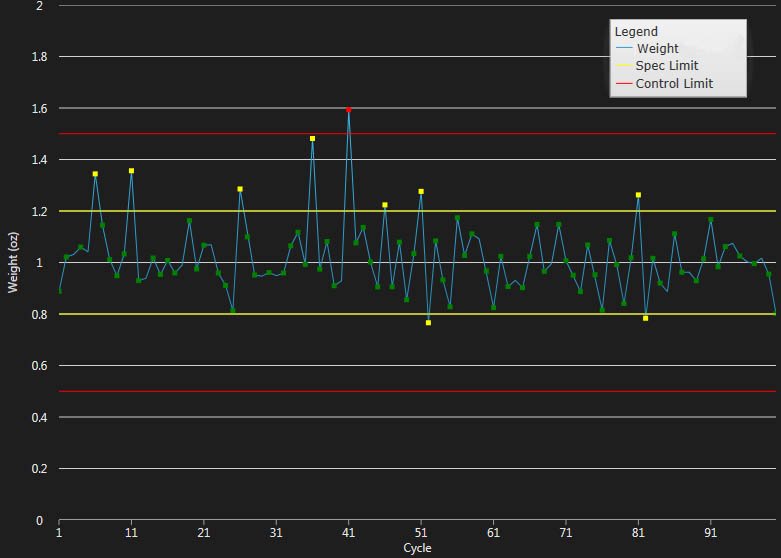Are You Getting The Most Out Of Your Data?
What are you doing with your measurement data? Chances are, the data you are collecting is specifically for meeting quality and/or compliance requirements. You may even be collecting this data in a spreadsheet for future analysis. What if you could track this data in real time to improve your process? How could you use that information to solve your production challenges?
In many facilities, measurements are taken for quality or compliance purposes, recorded on data sheets and filed away until there is a production issue. At which point, records are pulled and hours or days are spent pouring through the data to identify and correct the problem.
In the very simplest form, collecting and storing data in a systematic way can help to eliminate hours of work by providing easily accessible data. This could be as simple as tracking measurement data in a spreadsheet or database. The data can then be translated into charts to show trends over time to better understand your process. While this is preferable to not tracking data at all, it is reactive instead of proactive because you aren’t able to see what is going on in real-time on your production lines. A problem that occurred yesterday or last week can be corrected, but what if you could correct the issue within the hour?
SPC, or Statistical Process Control, is the process of automatically measuring and tracking data in real-time during the production process to ensure quality. Data is typically plotted on a graph with set limits within which the process is considered to be preforming properly. Variations outside of the set limits alert the operator to the issue and allow for immediate correction. Utilizing real-time SPC can help you to reduce scrap, inconsistencies, rework and downtime while improving quality and productivity –all by better utilizing measurement data you are already collecting.

The above SPC graph shows product weights over time and alerts the operator to those outside of the acceptable range using color coding.
SPC data collection can be accomplished using a variety of different SPC-enabled devices. Most common are PLC, or Programmable Logic Controllers that utilize Open Platform Communications (OPC) standards. In a traditional PLC system, each PLC device throughout the facility could communicate only with the main computer. In these systems, the software and hardware is proprietary and requires purchase of software licenses based on the number of devices connected. For this reason, these systems require a significant investment in both hardware and software in order to build an infrastructure to automate your process and track measurements.
More recently the Internet of Things (IOT), has moved into the manufacturing world. You can now remotely control and monitor devices throughout your facility, and those devices can also be programmed to send email or texts back to you with data and measurements. Like their PLC predecessors, IOT devices allow for automation and analysis of data. The key difference being that while PLC devices can only be controlled by a central computer, IOT devices can communicate back and forth with any device on the network utilizing Ethernet or Internet Protocol (IP) communication standards. Additionally, IOT allows for the utilization of open source software programs which can eliminate the need for software licenses for each device.
If you want to see how SPC data collection can improve your production process, contact us to set up a meeting with one of our application specialists. Our team has years of experience in precision measurement, data collection and analysis. We will work with you to create a solution that is perfect for your application

